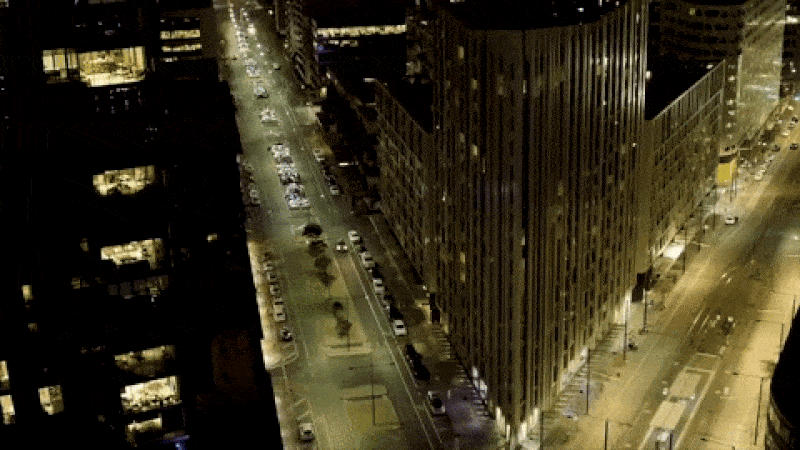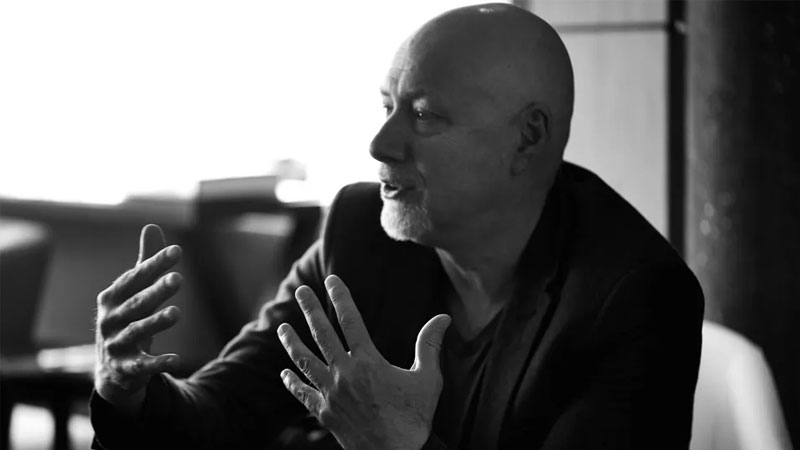Ramus Uses Light to Reconnect Communities to the Public Sphere
Progressive property developers will be integral in helping communities reclaim and reconnect to the public sphere following the prolonged shutdown caused by the coronavirus crisis, Ramus artistic director Bruce Ramus says.
Ramus’ design studio, known for its large-scale light art installations for architectural facades and precincts, has been assisting developers in finding new innovations in a time of contraction.
“During this time it has really made us look deeper into our work, what it brings to urban design, and how it can help shape the public realm experience. We want to create space for people to connect.
“Architects and developers are now starting to think of light as a material, and as a way to articulate and animate their buildings.
“When we integrate light into buildings and public spaces, it creates space within the architecture, which allows people to feel and see an energy in a city that they can connect with.”
Ramus formed the established Melbourne-based design studio, following an illustrious career lighting shows for the likes of U2, David Bowie and James Brown, and has quickly become known for its powerful, integrated property-amplifying approach.
The illumination studio is responsible for the world's largest permanent interactive light display located at Darling Quarter in Sydney as well as the innovative weather visualisation wrapping Lendlease's 888 Collins Street tower in Melbourne.

“Property developers these days are understanding that it isn't just about attracting tenants, it's about sharing a message which highlights true innovation, true connection,” Ramus said.
“How do you give back to a community in real terms? An interactive piece gives the community a sense of agency in the design of their city. It offers the developer a chance to show their commitment to innovation and articulate their messages in a forward-thinking way.”
States across Australia have now shutdown “non-essential businesses” in a bid to curb the spread of the coronavirus through social distancing protocols, remote working measures and stay-at-home orders, which in turn has seen people keeping off the streets and bringing city centres to a standstill.
Ramus pointed to the excitement and magnetism of large-scale, community-focused art, and highlights its importance in helping to revitalise ailing precincts, businesses and communities after the pandemic.
“At this time when we are in isolation and contraction, shared experience and engagement with people becomes more important than ever.
“There are architectural constraints that lighting and art are largely free of, and when they’re combined, they can give a city a voice, and the developer a point of difference.
Together, these can help form a more connected society after a time of distinct distance.

Ramus is currently working on a number of large light shows and installations around the world and recently unveiled an impressive 25-metre, 8k resolution, crescent-shaped digital canvas in the foyer of The Star Grand in Sydney.
Continuing to innovate, the design studio has now begun remotely programming a number of its current major projects, meaning business as usual for the multi-faceted team while respecting social distancing.
The studio is working on a 42-storey facade on a prominent but largely deserted Melbourne street, using remote access through their bespoke control system platform to test, adjust and observe results.
“When it comes to the importance of integrating light art into the built form, there’s a mature design culture here in Australia. There’s a lot of architects and developers in Australia who really get it. It’s a global trend, and we’re leading it.
“This is just the beginning. Together, we are at the forefront of designing buildings and cities in a new, more connected way”.
The Urban Developer is proud to partner with Ramus to deliver this article to you. In doing so, we can continue to publish our free daily news, information, insights and opinion to you, our valued readers.
















